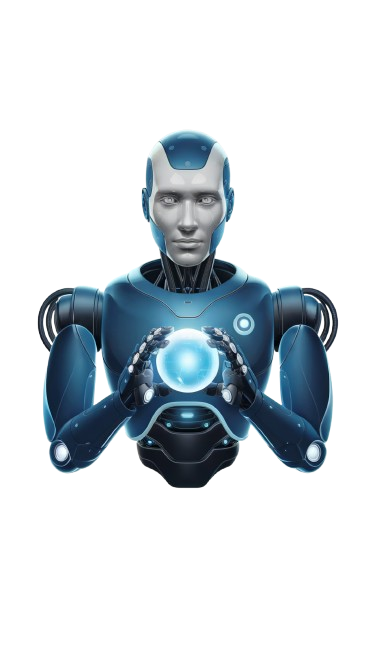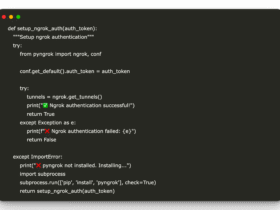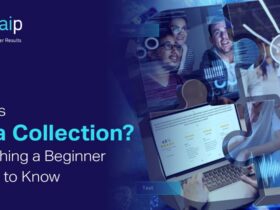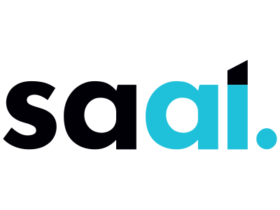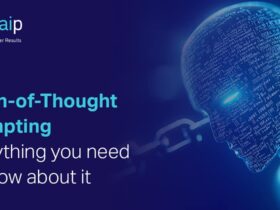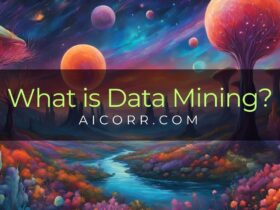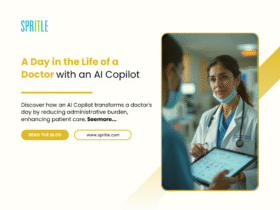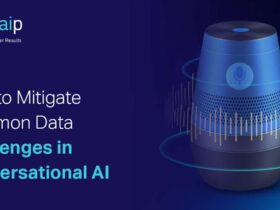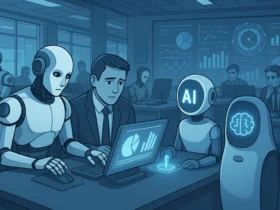Back in 2013, Dove’s “Real Beauty Sketches” campaign changed the game for brand storytelling in advertising.
The campaign’s goal was to tap into emotional insights and address societal issues. It showed how purpose-driven advertising can spark meaningful conversations and build deeper connections with audiences around the world.
Fast forward to 2025, and we’re seeing something bigger than Dove’s campaign by a million miles. AI in ad agencies is helping founders slash the time and budget spent on creating marketing materials. From ideation to copywriting, design, and testing, it’s reshaping how agencies work.
With AI on an upward trajectory, it’s projected to grow at a CAGR of 26.60% from 2025 to 2031 and reach a market volume of $1.01 trillion by 2031. This means we’re only beginning to tap into its full potential, and its impact will be much bigger for ad agencies.
Stay tuned as we explain how you can take advantage of AI ad creation to boost your operations while cutting your ad operations cost.
Practical Applications of AI in Ad Creation
A large part of advertising comes down to two things: ideation and turning those ideas into targeted content.
In fact, 82% of marketers say content marketing is central to their business strategy, and nearly a third of them spend 10 to 15 hours a day brainstorming and creating that content. Luckily, most AI use cases revolve around these marketing practices.
Generative AI for Copywriting
Creating copy is the biggest use case for AI ad creation. Whether you want to whip out social media copy, email newsletter, or even product descriptions, AI can generate them in seconds.
Now that sounds too good to be true. Well, it’s not, but there’s a caveat.
Using an AI tool like ChatGPT goes far beyond simply asking it to write social media copy. Sure, it can do that, but the quality of the output depends heavily on your ChatGPT prompts. The more detailed and strategic your prompt, the better your chances of generating high-performing ad copy.
For example, I gave ChatGPT a simple prompt to create a Facebook ad for hummocks. This was the result.

I then used one of our best ChatGPT prompt templates to generate another Facebook ad. Below is the prompt.

And here is the result.

As you can see, there’s a clear difference between the two versions of the copy. The first one feels flat, while the second is far more compelling.
That’s the power of a well-crafted prompt. Like Dom says in Fate of the Furious, “It’s not the car that matters, but it’s who’s behind the wheel.” The same goes for AI. It’s not just about using the tool; it’s about knowing how to drive it.
Use Weam AI’s Proven Prompt Frameworks
Generic prompts waste time and deliver bland results. Generate smarter ad copy with templates built for performance.
Design Automation
Marketing copy is only complete when it’s accompanied by a powerful graphic design.
Popular design tools like Canva and Adobe have simplified much of the creative process. Now, with AI capabilities built into these platforms, they’ve become a sort of AI ad creation tool, as you can design high-quality graphics much faster.
The best part? They can recommend layouts, color palettes, and fonts based on the latest design trends. Still, keep in mind, they’re just tools and will need humans with creativity to keep that emotional nuance.
ChatGPT has lately introduced its image generation feature. You can now design marketing graphics with a simple prompt. Here’s one I created for the hammock Facebook copy.

Real-time optimization
AI is a game-changer when it comes to real-time optimization. It enables on-the-fly adjustments that improve campaign performance and stretch every ad dollar further. Here’s how it makes that happen:
- Real-time metrics analysis: AI keeps a constant eye on your campaign performance, tweaking bids, budgets, and placements on the fly to help you get the most bang for your buck.
- Predictive analytics: AI can anticipate how users will behave and how campaigns might perform since it can analyze past data. This means you can fine-tune your strategy ahead of time, not just react after the fact.
- Personalization at scale: AI customizes ad content in real time based on individual user behavior and preferences, making your campaigns feel more personal, boosting engagement, and driving higher conversion rates.
- Operational efficiency: By automating time-consuming tasks like reporting and campaign management, AI streamlines workflows and frees up your team to focus on strategy, creativity, and big-picture thinking.
Testing at Scale
Your ad campaign is as successful as the data you’ve collected over time. However, this is something most marketers hate as it’s labour-intensive.
Thankfully, AI takes the heavy lifting out of the process, and the best part is that it works at scale. AI can automatically test hundreds, even thousands, of ad copy and creative variations, helping you find what performs best without the manual grind.
For example, assume you’re creating ads for a fitness app targeting different groups like busy professionals, new moms, and college students.
Instead of manually testing every variation, AI tools like Meta Advantage+ or Google Performance Max can mix and match your headlines, images, and CTAs automatically. They test hundreds of combinations in real time and double down on what works, saving you time and boosting results at scale.
Case Study: How WPP Used Generative AI to Cut Costs and Scale Campaigns for Global Brands
As ad production costs climb and speed-to-market becomes critical, global agency WPP is proving that generative AI isn’t just a buzzword but a business advantage.
The agency has worked with major brands like Nestlé and Mondelez, and has been at the forefront of using AI tools like ChatGPT and DALL-E to transform how advertising is ideated and executed. The agency uses AI to generate copy, images, and even full campaign concepts, cutting costs dramatically while boosting output.
Take Mondelez’s AI-driven Cadbury campaign in India: WPP used generative tech to create personalized video ads featuring Bollywood icon Shah Rukh Khan.
Local shop owners could generate their versions through a microsite, resulting in 130,000+ unique ads for 2,000 stores. The campaign earned 94 million views across Facebook and YouTube, without the cost of filming thousands of individual spots.
In another example, WPP teamed up with Nestlé to promote its La Laitière brand. Using DALL-E, they created a unique video inspired by Vermeer’s The Milkmaid, generating €700,000 worth of media value from content that cost virtually nothing to produce.
WPP estimates that using AI in campaigns can lead to savings of 10 to 20 times compared to traditional production methods. The agency has even invested in a new wave of talent, AI apprentices in London.
How AI achieves Cost Savings
The annual operating expenses for small and mid-sized advertising agencies range from $360,000 to $765,000, translating to approximately $985 to $2,095 per day.
In addition to the costs of hiring top talent, the biggest expenses typically come from technology, software tools, and marketing and client acquisition efforts. However, AI can play a key role in these areas, helping to significantly reduce costs.
Automation
Using AI to create marketing content is one thing, but automating it to run independently with minimal human involvement is a whole different game.
An AI-powered system won’t just create ads for you. It will also use smart automation to suggest and generate ads based on the product you’re promoting.
For instance, if you’re promoting a new line of eco-friendly water bottles on Meta (Facebook/Instagram), the platform’s Advantage+ Shopping Campaigns can automatically generate ad creatives based on your product catalog.
It will pull in product images, highlight key features like “BPA-free” or “made from recycled materials,” and suggest audience-specific headlines and descriptions.
With such precise automation, your team will have more time to focus on what matters, like nurturing leads and creating more tailored strategies.
Speed
Using AI to increase ad content creation production takes your speed to the next level. With Natural Language Processing and Generative AI, it can create content quickly, meaning tasks that took long hours can now be completed in a short time, from strategy to execution.
There’s nothing more fulfilling than squeezing a week’s worth of work into just a few minutes. That’s the kind of efficiency AI brings to the table. This will give you more time so you can shift your attention to strategy, customer experience, and scaling your business.
For example, instead of manually writing dozens of product descriptions for an e-commerce site, an AI tool like Jasper or Copy.ai can generate all of them in minutes based on just a few inputs like product type, features, and tone of voice.
Personalization
Personalization is no longer addressing prospects with their first names. With AI, your ad agency can engage with prospects at scale while keeping their individual preferences in check.
AI can help in the following ways in personalization:
- Predictive analytics: Machine learning algorithms analyze past behavior to predict future preferences, allowing for proactive personalization. This means businesses can deliver targeted recommendations or customized messaging that resonates with individuals before they even express a need.
- Data analysis and segmentation: AI processes large amounts of customer data, including demographics, browsing behavior, purchase history, and intent signals, to create detailed audience segments and customized personas.
- Content customization: AI creates personalized ad creatives, email campaigns, and dynamic website content tailored to resonate with specific audience segments or even individual users. This ensures each interaction feels relevant and engaging, driving better results.
Testing and Optimization
Thanks to AI, machine learning algorithms can analyze your ads’ performance across specific channels and provide insights on how to improve results.
In some cases, these platforms use AI to automate actions based on best practices, saving you valuable time. In other cases, they can highlight performance issues you might not even be aware of.
In the most advanced scenarios, AI can take over ad management, optimizing performance and spend by making real-time decisions to meet your advertising KPIs and recommending the most efficient budget.
Comparison of Costs
Here’s a breakdown comparing the costs of traditional ad creation to AI ad creation.
| Aspect | Traditional ad-creation | AI ad creation |
| Cost range | $10,000–$49,999 per project or $100–$149/hour | $25–$599/month, depending on plan and features |
| Production Time | Weeks or months due to manual creative processes | Seconds to hours with automated tools |
| Customization | Requires manual revisions, increasing time and cost | Fully customizable outputs with minimal effort |
| Scalability | Limited by team capacity and budget constraints | High scalability; can produce hundreds of creatives quickly |
| ROI potential | Dependent on creative quality and audience targeting | Up to 14x better conversion rates due to AI optimization |
Benefits for Digital Agencies

AI is no longer just a choice if you want to stay competitive in the advertising world—it’s essential. While reaching thousands of customers is the ultimate goal, sticking to traditional systems will only slow you down.
There’s so much to juggle: running tests, figuring out which ads are working, and gathering data to tweak campaigns in real-time. AI speeds all of this up, making it easier to stay agile and effective.
And unfortunately, humans are prone to errors which might further jeopardise your efforts. We can’t possibly keep up with hundreds or even thousands of ad variations, targeting tweaks, and budget changes just to get the best outcome.
On top of that, sifting through mountains of data to find new customer opportunities can limit your results. These are all the problems AI is designed to solve. It’ll streamline your operations, cut down on time, and slash your operational costs.
Conclusion
With the kind of transformation we’ve witnessed in the last few years in regards to AI, it’s no doubt that it’s not just the future but already here.
As an Ad agency, you need to be updated so you’re not left out. At the moment, the AI tools are already transforming advertising by cutting costs while boosting quality and efficiency.
Digital agencies that embrace these technologies can scale their operations, increase profitability, and deliver even better results for their clients.
Frequently Asked Questions
How is AI transforming the advertising industry?
AI is changing advertising by automating processes, enabling real-time optimization, enhancing personalization, and improving creative testing at scale. It empowers agencies to make data-driven decisions, target audiences more effectively, and deliver highly customized campaigns with greater efficiency.
What are the cost benefits of using AI in ad creation?
It depends but generally AI ad creation reduce costs compared to traditional methods. While traditional ad creation can cost tens of thousands of dollars and take weeks, AI tools streamline the process, producing high-quality ads at a fraction of the cost (as low as $25–$599 per month).
How does AI enable real-time optimization for ad campaigns?
AI monitors campaign performance in real time, analyzing metrics like click-through rates, conversions, and engagement. It automatically adjusts bids, budgets, and targeting strategies to maximize ROI, ensuring campaigns remain effective even as market conditions change.
Can AI help with creative testing at scale?
Yes, AI excels at creative testing by automating multivariate testing of ad elements such as visuals, copy, and calls-to-action. It quickly identifies the best-performing combinations and provides actionable insights, allowing agencies to optimize campaigns faster and more efficiently.
What role does AI play in personalization for advertising?
AI enables hyper-personalization by analyzing vast amounts of customer data to tailor ads to individual preferences and behaviors. It delivers dynamic content in real time, predicts future customer needs through machine learning, and ensures that every interaction feels relevant and engaging.

